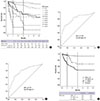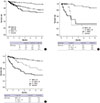Abstract
Figures and Tables
Fig. 1

Fig. 2

Journal List > J Korean Med Sci > v.28(8) > 1022039


Geun Hong 
https://orcid.org/http://orcid.org/0000-0003-2597-1068
Kwang-Woong Lee 
https://orcid.org/http://orcid.org/0000-0001-6412-1926
Tae Yoo 
https://orcid.org/http://orcid.org/0000-0003-3834-7125
Hyeyoung Kim 
https://orcid.org/http://orcid.org/0000-0002-3157-8214
Min-Su Park 
https://orcid.org/http://orcid.org/0000-0002-0707-2969
Youngrok Choi 
https://orcid.org/http://orcid.org/0000-0003-2408-7086
Nam-Joon Yi 
https://orcid.org/http://orcid.org/0000-0002-5467-425X
Kyung-Suk Suh 
https://orcid.org/http://orcid.org/0000-0002-9535-7349